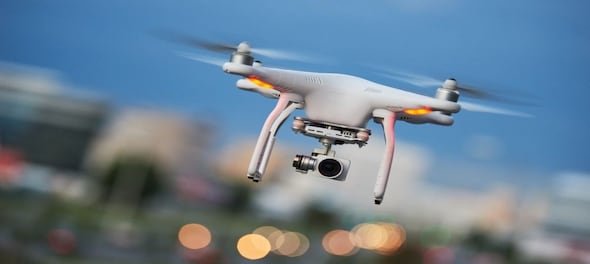
India relaxed its norms with respect to drones and the technology therein in the draft of the national drone policy, Drone Rules, 2021, released by the Union Civil Aviation Ministry on July 15.
The changes came a day after Prime Minister Narendra Modi chaired a meeting of his key ministers to discuss the formulation of a policy for the traffic management of unmanned aircraft systems (UAS) or drones.
Goals
One key goal of the new policy is to empower a wide spectrum of UAS, increase compliance ease while ensuring safety and security. The government can now combat the threat of illegal drones, as in the recent Jammu drone attack.
The earlier three-month old policy version -- Unmanned Aircraft System (UAS) Rules, 2021, issued on March 12, 2021 -- which saw many complaints from industry players, has been totally refurbished and liberalised. The new draft is in sync with ease of doing business.
Drones can be used across a spectrum of sectors from transportation to surveillance to weather survey and studying agriculture.
Easier Norms
The new policy makes it easier for companies, startups and people to own and operate drones. It also simplifies the certification process for makers, importers, operators and users. This aims to boost future technology by entrepreneurs and startups.
The draft drone rules have been built on a premise of trust, self-certification, more of self-regulation and less of intrusive monitoring, said reports. A plethora of tedious authorisations, certifications and permits have been relaxed.
What did the Minister say?
Civil Aviation Minister Jyotiraditya Scindia said drones are ushering in the next big tech revolution worldwide. In India, startups particularly can ride this new wave due to reduced costs, resources and time taken for operations, he said.
Scindia tweeted the 10 key takeaways of the new policy that mark a shift from earlier UAS rules.
Key Takeaways
Several approvals have been abolished and processes been made easier. The number of forms has been reduced from 25 to five. The coverage of drones has been increased from 300 kg to 500 kg.
The fee has been reduced to nominal levels. The maximum penalty for basic violations will be capped at Rs 100,000.
The yellow zone has been reduced from 45 km to 12 km from airport perimeter. No flight permission is required up to 400 km in green zones. No security clearance will be required before any registration or licence issuance.
The new policy makes the process for transfer and de-registration of drones easy. No pilot licence is required for micro drones (for non-commercial use), nano drones and research and development organisations.
In a major fillip to the drone industry, I am happy to present the Draft Drone Rules 2021 that mark a stark shift from the earlier UAS Rules. 10 key takeaways:✅ Several approvals abolished & processes made easier✅ No. of forms reduced from 25 to 51/4
— Jyotiraditya M. Scindia (@JM_Scindia) July 15, 2021
Digital Sky Platform
The soon-to-be-created Digital Sky platform will support drone technology frameworks such as NPNT (no permission, no take-off), provide flight permissions digitally; and manage unmanned aircraft operations and traffic efficiently.
The government plans to open the Digital Sky platform system, which will serve as aviation regulator DGCA's unified platform for users to obtain mandatory registration number and remote pilot licence.
Under the new rules, manufacturers and importers can generate their drone’s unique identification on the Digital Sky platform.
Colour Coded Zones
The ministry will notify an airspace map for drone operations dividing India’s airspace (geo fencing) into green which is 400 ft above ground level (AGL), yellow (200 ft AGL) and red (no-go areas) zones.
To fly in the yellow zone, a drone pilot will require permission from the air traffic control authority.
Way Forward
The new policy lays the foundation for drone taxis and dedicated corridors for cargo service deliveries.
The draft policy on drones has been discussed for over two years. The integration of UAS into the National Airspace System (NAS) was technically and operationally challenging.
(Edited by : Shoma Bhattacharjee)
First Published: Jul 16, 2021 8:52 PM IST
Check out our in-depth Market Coverage, Business News & get real-time Stock Market Updates on CNBC-TV18. Also, Watch our channels CNBC-TV18, CNBC Awaaz and CNBC Bajar Live on-the-go!


2024 Lok Sabha Elections | Why Kerala is in focus as the second phase begins to vote
Apr 26, 2024 9:33 AM
Bengaluru Rural Lok Sabha election: Over 35% voter turnout recorded by 1 pm
Apr 26, 2024 9:11 AM

